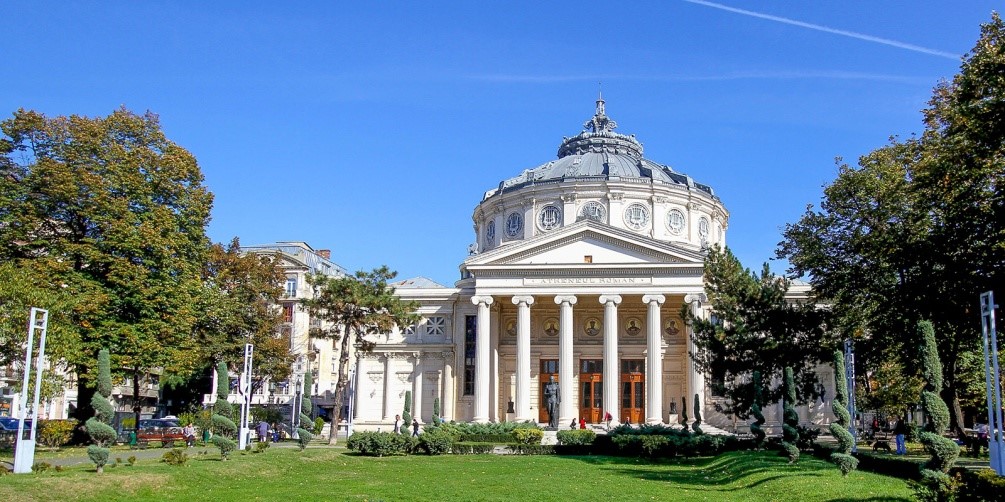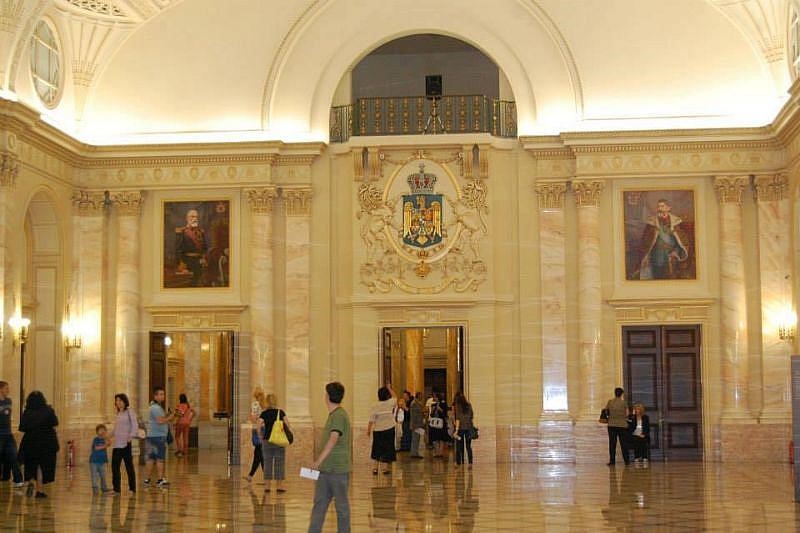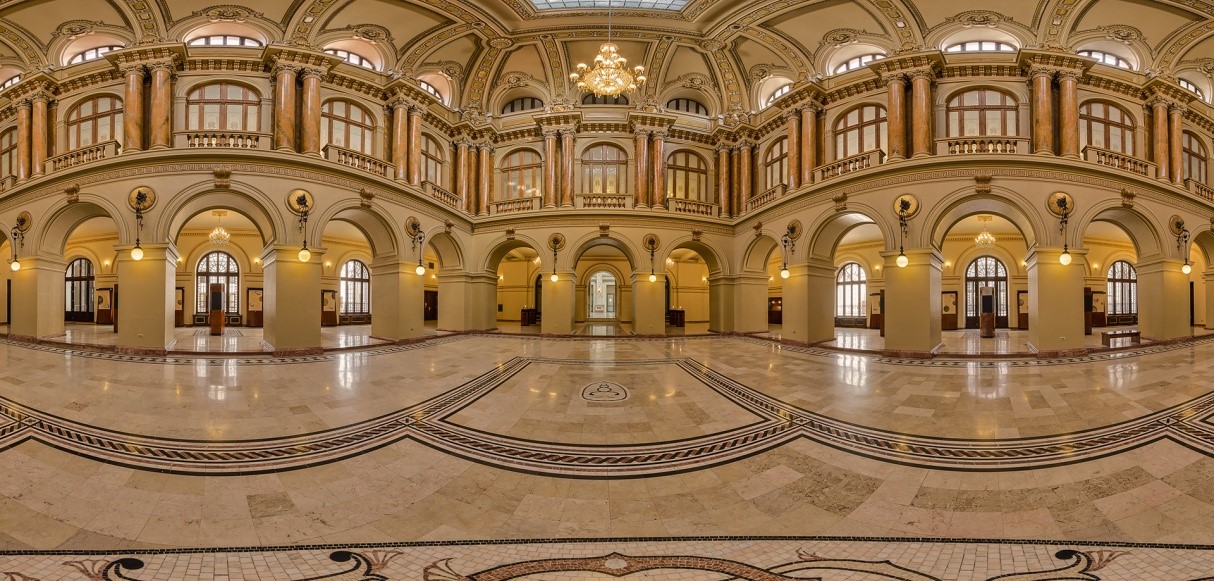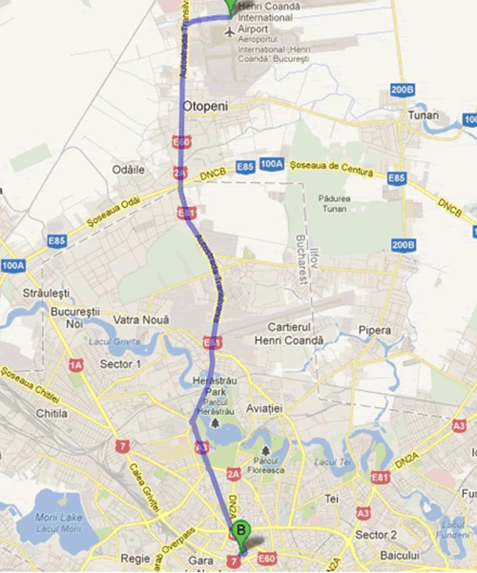

Arriving at the FACULTY OF FINANCE AND BANKING for 63rd EWGCFM meeting & XVIII International FIBA conference
Bucharest is the capital municipality, cultural, industrial, and financial center of Romania. It is the largest city in Romania and lies on the banks of the Dambovita River. Bucharest was first mentioned in documents in 1459. It became the capital of Romania in 1862 and is the center of Romanian media, culture and art. Its architecture is a mix of historical (neo-classical), interbellum (Bauhaus and Art Deco), Communist-era and modern. In the period between the two World Wars, the city's elegant architecture and the sophistication of its elite earned Bucharest the nickname of "Little Paris". In recent years, the city has been experiencing an economic and cultural boom. Economically, Bucharest is the most prosperous city in Romania and is one of the main industrial centers and transportation hubs of Eastern Europe.

In Bucharest the first place recommended to visit is the Palace of the Parliament which is also known as the House of the People. Is the most famous attraction of Romania. One of the most imposing and contentious constructions in the world, the House of the People is an impressive symbol of the communist regime that irremediably reshaped the countryís history. Is the second largest building after the Pentagon, the Palace of the Parliament has 370,000 square meters and are 84 meters tall, and more than 1,000 rooms.
The Village Museum is a complex collection of over 53,000 traditional objects in the open-air section and its interior spaces. The enduring exposition features over 300 monuments, including hundreds of years old wooden churches, traditional houses, and installations, all brought to the museum from different corners of the country. The Village Museum is located in Bucharestís largest park, respectively Herastrau, which is one of the most important cultural attractions of the capital.
Bucharest has a lot of old churches, some of them of major historical meaning. Dating from different centuries and built in diverse architectural styles, these churches have modern interior paintings and affluent history to advocate them as key enriching attractions. Among this churches the most important are: Patriarchy, Coltea, Zlatari, Stavropoleos, Sfantu Gheorghe, Sfantu Spiridon, Radu Voda, Mihai Voda, and the Antim.
Old Town from Bucharest was once the most important commercial streets of the city. Nowadays if filled with bars and restaurants. The best-known of these streets is Lipscani. Old Town Bucharest was the financial heart of the capital. Thus, the most important banks, including the National Bank of Romania inaugurated in 1890, were located here.
The finest building in Bucharest is the Romanian Athenaeum. This concert hall is next to the Royal Palace and the old national library. This building is the work of French architect Albert Galleron, who designed the National Bank of Romania. The annual symphonic concert George Enescu, is held in this building because of its outstanding acoustics.


In 1866, the palace became royal residency for Alexandru Ioan Cuza and for Carol of Hohenzollern. Between 1882 and 1885 the architect Paul Gottereau changed the palace fundamentally using neoclassical architecture features. Architect Dumitru Nenciulescu contributed to more substantial changes between 1930 and 1937. In 1949 was born, The National Museum of Art, from a core collected works in one of the palace's wings.
The museum of the National Bank of Romania is a unique and fascinating journey throughout history of monetary, banking and culture. This building is the most beautiful in Bucharest, as stated Ion Mincu architect.

1. By plane
Most international flights arrive at Henri Coanda International Airport (Otopeni), located about 12 miles north of downtown Bucharest. Major car rental companies have offices located on the baggage claim level.
It's the easiest way if you live in Western Europe or further. Bucharest has two international airports, Otopeni Henri Coanda (OTP), and Baneasa Aurel Vlaicu. Today, all the flights are landing in Otopeni because the Baneasa airport is in a modernization process. Otopeni is 17km north of Bucharest along the DN1 to Ploiesti. It should be a just 1a 15-minute drive to the entrance of Bucharest.
A ride to the city centre by taxi will set you back around 50.00 lei (15 euros). You can also get to town by taking bus Nr 783, which stops underneath the arrivals hall, in front of the internal flights terminal and leaves for the city centre (stopping at Victoria Square, Romana Square and Universitatii Square) every 30 minutes from 05:23 until 23:53. Tickets costing 8 lei (2 euros) (valid for two trips) need to be purchased before boarding from near the airport exit.
The Faculty of Finance and Banking is located in 5-7 Mihail Moxa Street. This is just 10 minutes' walk from Victoriei Square or Romana Square.

2. By train
If you arrive by train you will arrive at Gara de Nord train station. There you can find ATMs and shops. Outside you can find 2 or 3 taxi stations that will get you anywhere in the city, or you can take the subway: you are just one stop away from Victoriei Square.
Overview
About conference
Topics
Keynote speakers
Partners
Awards
News
Information
Scientific committee
Organizing committee
Important deadlines
Registration
Accepted papers
Program
Paper submission
Submission of papers
Publication opportunity
Travel information
Location and travelling
Location map
Accommodation
Contact:
fiba@fin.ase.ro